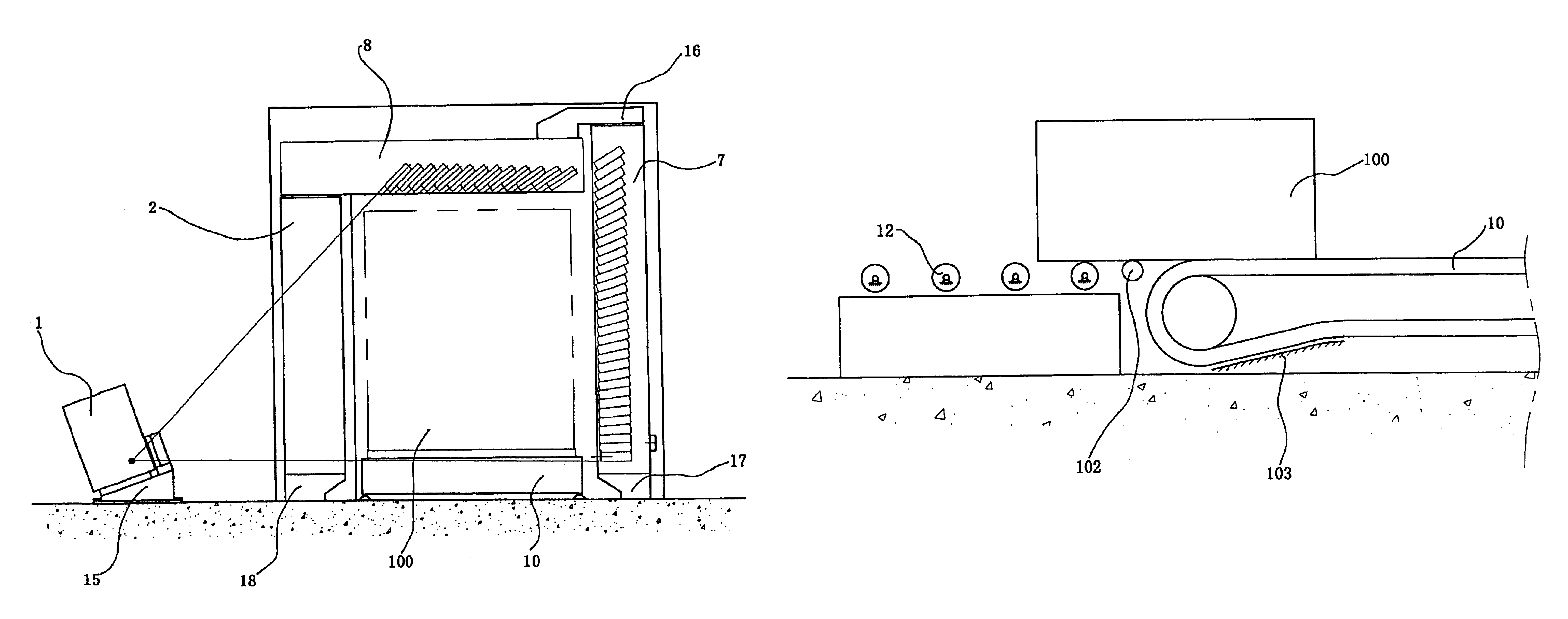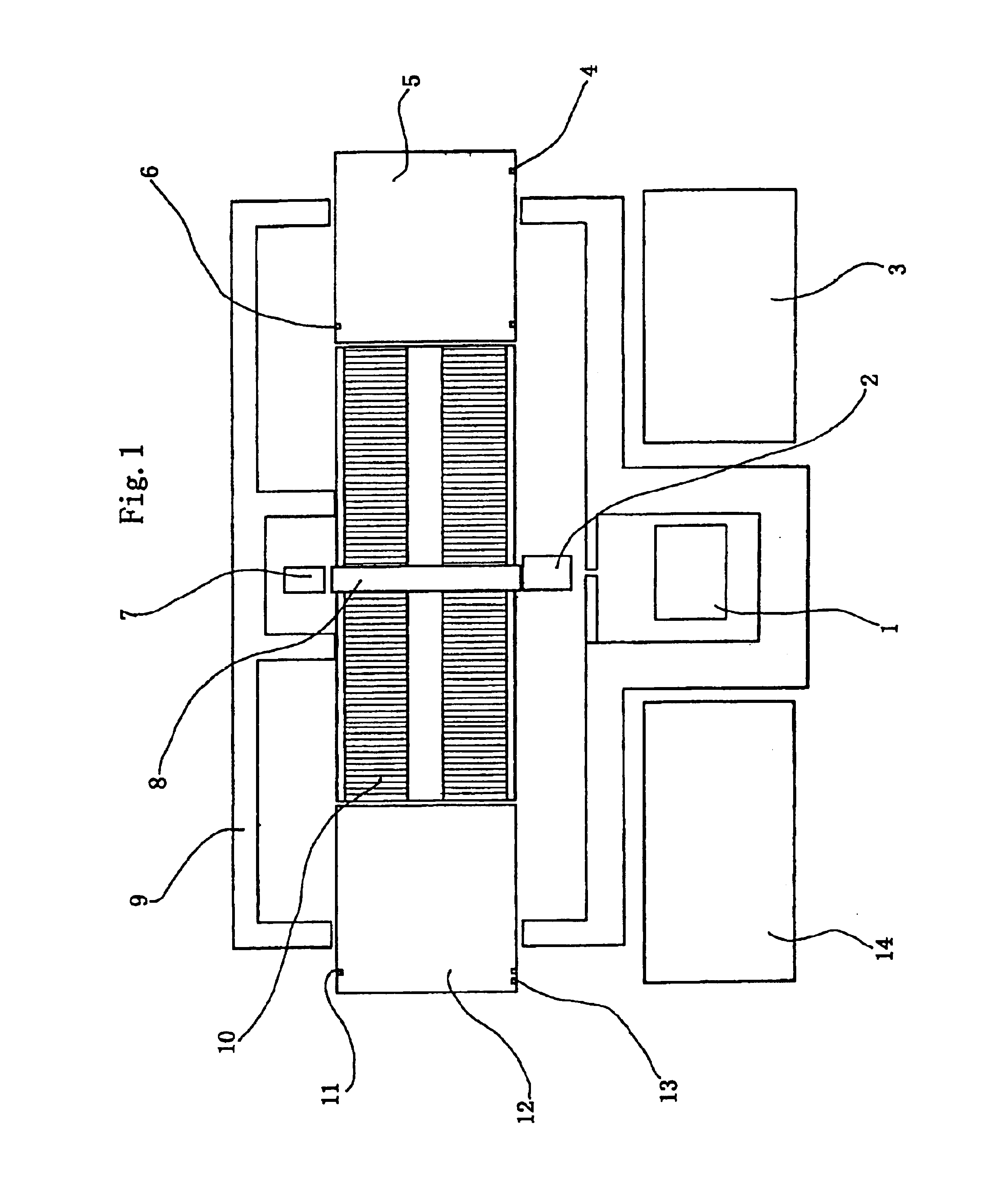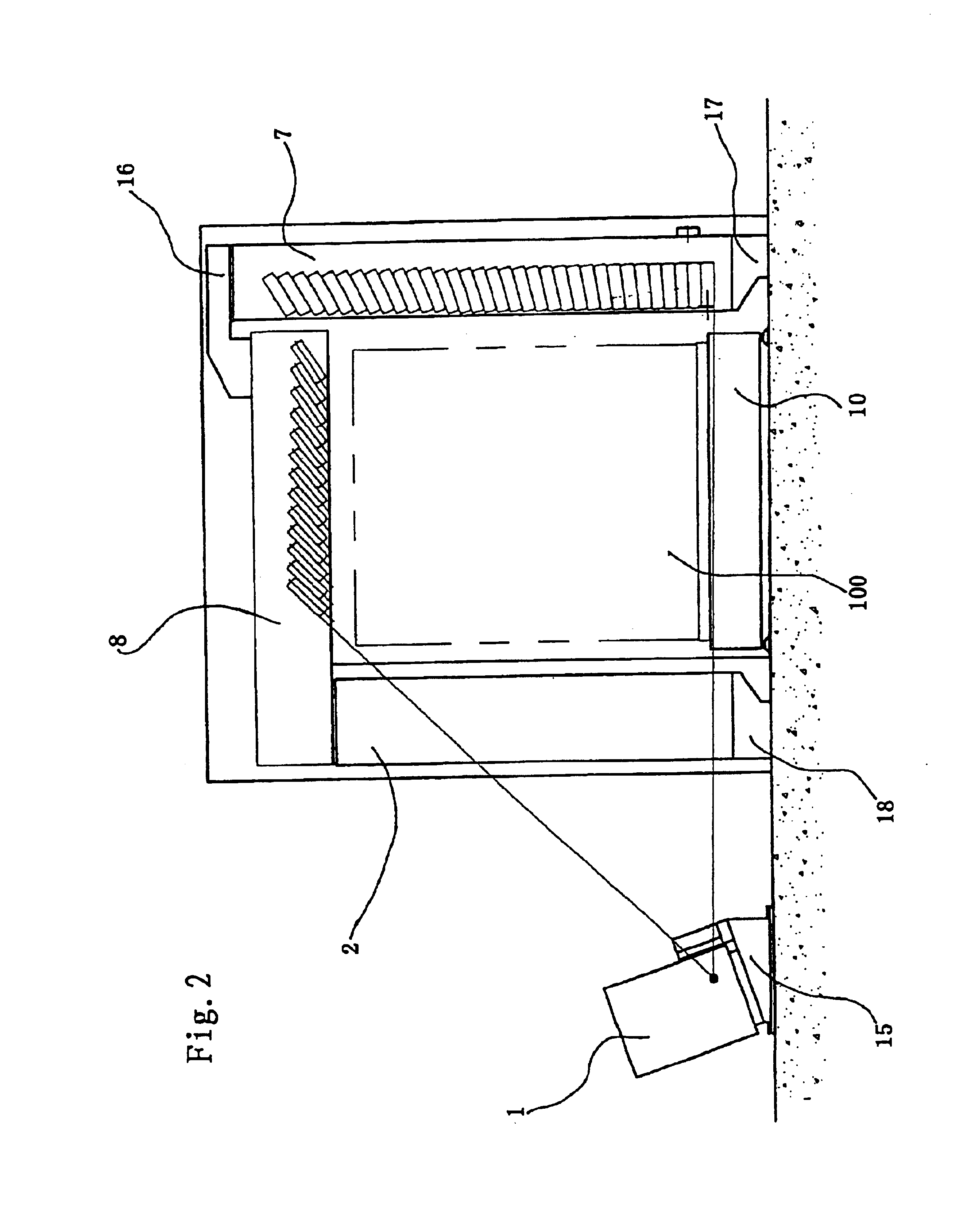Inspection system for air cargoes or vehicles
- Summary
- Abstract
- Description
- Claims
- Application Information
AI Technical Summary
Benefits of technology
Problems solved by technology
Method used
Image
Examples
Embodiment Construction
[0030]As shown in FIGS. 1 and 2, an inspection system for air cargoes or vehicles with an accelerator as its radiation source mainly comprises an electronic linear accelerator 1, a collimator 2, a horizontal detector arm 8, a vertical detector arm 7, a conveying device comprising a chain-plank conveyor 10 and roller conveyors 5, 12, radiation shielding walls 9, an instrument cabin 14, and a workroom 3. The accelerator 1, the collimator 2 and the vertical detector arm 7 are respectively provided on the accelerator base 15, the collimator base 18 and the vertical detector arm base 17. The collimator 2 is provided between the conveying device and the accelerator 1. The horizontal detector arm 8 is supported by the upper end of the collimator 2. The vertical detector arm 7 is located in the side opposite to the accelerator 1. The horizontal detector arm 8 is provided over the conveying device. One end of the horizontal detector arm 8 is connected to the vertical detector arm 7 via the c...
PUM
 Login to View More
Login to View More Abstract
Description
Claims
Application Information
 Login to View More
Login to View More - R&D
- Intellectual Property
- Life Sciences
- Materials
- Tech Scout
- Unparalleled Data Quality
- Higher Quality Content
- 60% Fewer Hallucinations
Browse by: Latest US Patents, China's latest patents, Technical Efficacy Thesaurus, Application Domain, Technology Topic, Popular Technical Reports.
© 2025 PatSnap. All rights reserved.Legal|Privacy policy|Modern Slavery Act Transparency Statement|Sitemap|About US| Contact US: help@patsnap.com



